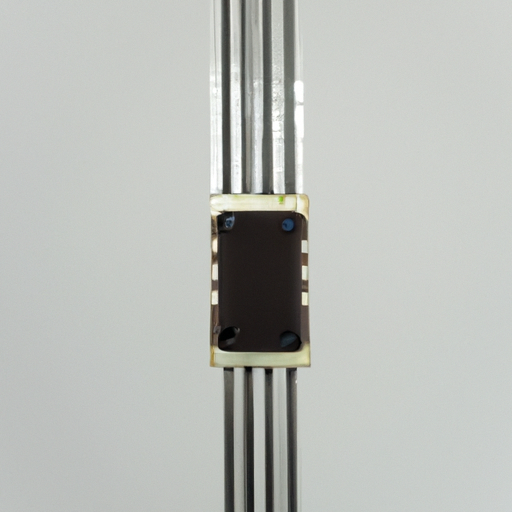Development Trends in the Sensitive Resistor Industry

I. Introduction
Sensitive resistors, also known as precision resistors, are components that exhibit a high degree of sensitivity to changes in voltage, current, or temperature. These resistors play a crucial role in various applications, including automotive systems, consumer electronics, and medical devices, where accurate measurements and control are essential. As technology continues to evolve, the sensitive resistor industry is experiencing significant changes, driven by advancements in materials, manufacturing techniques, and market demands. This blog post explores the development trends in the sensitive resistor industry, highlighting key technological advancements, market dynamics, environmental considerations, and future outlooks.
II. Historical Context
The evolution of sensitive resistors can be traced back to the early days of electrical engineering. Initially, resistors were simple components made from carbon or metal films, primarily used for basic circuit applications. Over the years, the demand for more precise and reliable components led to significant innovations in resistor technology. Key milestones include the introduction of thin-film and thick-film resistors, which offered improved accuracy and stability.
Traditional applications of sensitive resistors have included analog circuits, measurement devices, and control systems. These applications laid the groundwork for the modern sensitive resistor industry, which has expanded to encompass a wide range of sectors, including telecommunications, aerospace, and industrial automation.
III. Technological Advancements
A. Miniaturization of Sensitive Resistors
One of the most notable trends in the sensitive resistor industry is the miniaturization of components. The advent of nanotechnology has enabled manufacturers to create smaller resistors without compromising performance. This miniaturization is particularly beneficial in applications where space is limited, such as in smartphones and wearable devices. Smaller form factors allow for more compact designs and increased functionality in electronic devices.
B. Enhanced Sensitivity and Accuracy
Technological advancements have also led to enhanced sensitivity and accuracy in sensitive resistors. Innovations in materials, such as the development of high-stability thin films and advanced ceramics, have improved the performance of these components. Additionally, advanced manufacturing techniques, including laser trimming and automated production processes, have enabled manufacturers to achieve tighter tolerances and better performance characteristics.
C. Integration with Smart Technologies
The rise of the Internet of Things (IoT) and smart devices has further transformed the sensitive resistor industry. These components are increasingly being integrated into automation and control systems, where they play a vital role in monitoring and regulating various parameters. For instance, sensitive resistors are used in smart thermostats to provide accurate temperature readings, enabling energy-efficient heating and cooling systems. As smart technologies continue to proliferate, the demand for sensitive resistors is expected to grow.
IV. Market Trends
A. Growing Demand in Various Sectors
The sensitive resistor market is witnessing growing demand across multiple sectors. In the automotive industry, the shift towards electric vehicles (EVs) and advanced driver-assistance systems (ADAS) has created a need for high-precision components that can ensure safety and performance. Similarly, the consumer electronics sector is driving demand for sensitive resistors in devices such as smartphones, tablets, and smart home products.
The medical device industry is another significant market for sensitive resistors. With the increasing focus on remote patient monitoring and telehealth solutions, the need for accurate and reliable sensors has never been greater. Sensitive resistors are essential in medical devices for measuring vital signs and ensuring accurate diagnostics.
B. Regional Market Analysis
The sensitive resistor market is geographically diverse, with significant activity in North America, Europe, and the Asia-Pacific region. North America remains a key market, driven by technological advancements and a strong focus on research and development. Europe is also witnessing growth, particularly in the automotive and medical sectors, where stringent regulations demand high-quality components.
The Asia-Pacific region, particularly countries like China, Japan, and South Korea, is experiencing rapid growth in the sensitive resistor market. The region's booming electronics industry and increasing investments in research and development are contributing to this trend.
C. Competitive Landscape
The sensitive resistor market is characterized by intense competition, with several key players dominating the landscape. Companies such as Vishay Intertechnology, Yageo Corporation, and Panasonic are at the forefront of the industry, continually innovating and expanding their product offerings. Mergers and acquisitions are also common as companies seek to enhance their capabilities and market reach.
V. Environmental and Regulatory Factors
A. Sustainability Trends in the Sensitive Resistor Industry
As environmental concerns become more prominent, the sensitive resistor industry is increasingly focusing on sustainability. Manufacturers are exploring eco-friendly materials and processes to reduce their environmental impact. This includes the use of recyclable materials and the implementation of energy-efficient manufacturing practices.
Recycling and waste management are also critical considerations. Companies are developing programs to recycle sensitive resistors and minimize waste, aligning with global sustainability goals.
B. Regulatory Compliance and Standards
Regulatory compliance is a significant factor influencing the sensitive resistor industry. Manufacturers must adhere to various standards and regulations, including RoHS (Restriction of Hazardous Substances) and REACH (Registration, Evaluation, Authorisation, and Restriction of Chemicals). These regulations impact manufacturing processes and materials used in sensitive resistors.
Looking ahead, the industry can expect evolving compliance requirements as governments and regulatory bodies continue to prioritize environmental sustainability and consumer safety.
VI. Challenges Facing the Industry
Despite the positive trends, the sensitive resistor industry faces several challenges. Supply chain disruptions, exacerbated by global events such as the COVID-19 pandemic, have impacted the availability of raw materials and components. Manufacturers must navigate these disruptions to maintain production and meet customer demands.
Additionally, competition from alternative technologies, such as digital sensors and other electronic components, poses a challenge to the sensitive resistor market. Companies must continuously innovate to differentiate their products and maintain market share.
Balancing cost and performance is another challenge. As manufacturers strive to enhance the performance of sensitive resistors, they must also consider cost implications to remain competitive in a price-sensitive market.
VII. Future Outlook
The future of the sensitive resistor market appears promising, with several predictions indicating continued growth. The increasing demand for precision components in emerging technologies, such as autonomous vehicles and smart cities, will drive the need for sensitive resistors.
Emerging technologies, including advanced materials and manufacturing techniques, have the potential to revolutionize the industry. For instance, the development of flexible and printed electronics may open new avenues for sensitive resistor applications.
Opportunities for innovation and growth abound, particularly in sectors such as renewable energy, where accurate measurements are critical for optimizing performance. Companies that invest in research and development and embrace new technologies will be well-positioned to thrive in the evolving landscape.
VIII. Conclusion
In summary, the sensitive resistor industry is undergoing significant transformations driven by technological advancements, market dynamics, and environmental considerations. The evolution of sensitive resistors has paved the way for enhanced performance, miniaturization, and integration with smart technologies. As demand grows across various sectors, manufacturers must navigate challenges while seizing opportunities for innovation and growth.
Staying ahead in the sensitive resistor industry requires a commitment to research and development, sustainability, and regulatory compliance. As the industry continues to evolve, the future of sensitive resistors looks bright, with the potential to play a pivotal role in shaping the next generation of electronic devices and systems.
IX. References
1. Academic journals on electrical engineering and materials science.
2. Industry reports from market research firms specializing in electronic components.
3. Market analysis publications focusing on the sensitive resistor market and its trends.
Development Trends in the Sensitive Resistor Industry

I. Introduction
Sensitive resistors, also known as precision resistors, are components that exhibit a high degree of sensitivity to changes in voltage, current, or temperature. These resistors play a crucial role in various applications, including automotive systems, consumer electronics, and medical devices, where accurate measurements and control are essential. As technology continues to evolve, the sensitive resistor industry is experiencing significant changes, driven by advancements in materials, manufacturing techniques, and market demands. This blog post explores the development trends in the sensitive resistor industry, highlighting key technological advancements, market dynamics, environmental considerations, and future outlooks.
II. Historical Context
The evolution of sensitive resistors can be traced back to the early days of electrical engineering. Initially, resistors were simple components made from carbon or metal films, primarily used for basic circuit applications. Over the years, the demand for more precise and reliable components led to significant innovations in resistor technology. Key milestones include the introduction of thin-film and thick-film resistors, which offered improved accuracy and stability.
Traditional applications of sensitive resistors have included analog circuits, measurement devices, and control systems. These applications laid the groundwork for the modern sensitive resistor industry, which has expanded to encompass a wide range of sectors, including telecommunications, aerospace, and industrial automation.
III. Technological Advancements
A. Miniaturization of Sensitive Resistors
One of the most notable trends in the sensitive resistor industry is the miniaturization of components. The advent of nanotechnology has enabled manufacturers to create smaller resistors without compromising performance. This miniaturization is particularly beneficial in applications where space is limited, such as in smartphones and wearable devices. Smaller form factors allow for more compact designs and increased functionality in electronic devices.
B. Enhanced Sensitivity and Accuracy
Technological advancements have also led to enhanced sensitivity and accuracy in sensitive resistors. Innovations in materials, such as the development of high-stability thin films and advanced ceramics, have improved the performance of these components. Additionally, advanced manufacturing techniques, including laser trimming and automated production processes, have enabled manufacturers to achieve tighter tolerances and better performance characteristics.
C. Integration with Smart Technologies
The rise of the Internet of Things (IoT) and smart devices has further transformed the sensitive resistor industry. These components are increasingly being integrated into automation and control systems, where they play a vital role in monitoring and regulating various parameters. For instance, sensitive resistors are used in smart thermostats to provide accurate temperature readings, enabling energy-efficient heating and cooling systems. As smart technologies continue to proliferate, the demand for sensitive resistors is expected to grow.
IV. Market Trends
A. Growing Demand in Various Sectors
The sensitive resistor market is witnessing growing demand across multiple sectors. In the automotive industry, the shift towards electric vehicles (EVs) and advanced driver-assistance systems (ADAS) has created a need for high-precision components that can ensure safety and performance. Similarly, the consumer electronics sector is driving demand for sensitive resistors in devices such as smartphones, tablets, and smart home products.
The medical device industry is another significant market for sensitive resistors. With the increasing focus on remote patient monitoring and telehealth solutions, the need for accurate and reliable sensors has never been greater. Sensitive resistors are essential in medical devices for measuring vital signs and ensuring accurate diagnostics.
B. Regional Market Analysis
The sensitive resistor market is geographically diverse, with significant activity in North America, Europe, and the Asia-Pacific region. North America remains a key market, driven by technological advancements and a strong focus on research and development. Europe is also witnessing growth, particularly in the automotive and medical sectors, where stringent regulations demand high-quality components.
The Asia-Pacific region, particularly countries like China, Japan, and South Korea, is experiencing rapid growth in the sensitive resistor market. The region's booming electronics industry and increasing investments in research and development are contributing to this trend.
C. Competitive Landscape
The sensitive resistor market is characterized by intense competition, with several key players dominating the landscape. Companies such as Vishay Intertechnology, Yageo Corporation, and Panasonic are at the forefront of the industry, continually innovating and expanding their product offerings. Mergers and acquisitions are also common as companies seek to enhance their capabilities and market reach.
V. Environmental and Regulatory Factors
A. Sustainability Trends in the Sensitive Resistor Industry
As environmental concerns become more prominent, the sensitive resistor industry is increasingly focusing on sustainability. Manufacturers are exploring eco-friendly materials and processes to reduce their environmental impact. This includes the use of recyclable materials and the implementation of energy-efficient manufacturing practices.
Recycling and waste management are also critical considerations. Companies are developing programs to recycle sensitive resistors and minimize waste, aligning with global sustainability goals.
B. Regulatory Compliance and Standards
Regulatory compliance is a significant factor influencing the sensitive resistor industry. Manufacturers must adhere to various standards and regulations, including RoHS (Restriction of Hazardous Substances) and REACH (Registration, Evaluation, Authorisation, and Restriction of Chemicals). These regulations impact manufacturing processes and materials used in sensitive resistors.
Looking ahead, the industry can expect evolving compliance requirements as governments and regulatory bodies continue to prioritize environmental sustainability and consumer safety.
VI. Challenges Facing the Industry
Despite the positive trends, the sensitive resistor industry faces several challenges. Supply chain disruptions, exacerbated by global events such as the COVID-19 pandemic, have impacted the availability of raw materials and components. Manufacturers must navigate these disruptions to maintain production and meet customer demands.
Additionally, competition from alternative technologies, such as digital sensors and other electronic components, poses a challenge to the sensitive resistor market. Companies must continuously innovate to differentiate their products and maintain market share.
Balancing cost and performance is another challenge. As manufacturers strive to enhance the performance of sensitive resistors, they must also consider cost implications to remain competitive in a price-sensitive market.
VII. Future Outlook
The future of the sensitive resistor market appears promising, with several predictions indicating continued growth. The increasing demand for precision components in emerging technologies, such as autonomous vehicles and smart cities, will drive the need for sensitive resistors.
Emerging technologies, including advanced materials and manufacturing techniques, have the potential to revolutionize the industry. For instance, the development of flexible and printed electronics may open new avenues for sensitive resistor applications.
Opportunities for innovation and growth abound, particularly in sectors such as renewable energy, where accurate measurements are critical for optimizing performance. Companies that invest in research and development and embrace new technologies will be well-positioned to thrive in the evolving landscape.
VIII. Conclusion
In summary, the sensitive resistor industry is undergoing significant transformations driven by technological advancements, market dynamics, and environmental considerations. The evolution of sensitive resistors has paved the way for enhanced performance, miniaturization, and integration with smart technologies. As demand grows across various sectors, manufacturers must navigate challenges while seizing opportunities for innovation and growth.
Staying ahead in the sensitive resistor industry requires a commitment to research and development, sustainability, and regulatory compliance. As the industry continues to evolve, the future of sensitive resistors looks bright, with the potential to play a pivotal role in shaping the next generation of electronic devices and systems.
IX. References
1. Academic journals on electrical engineering and materials science.
2. Industry reports from market research firms specializing in electronic components.
3. Market analysis publications focusing on the sensitive resistor market and its trends.













